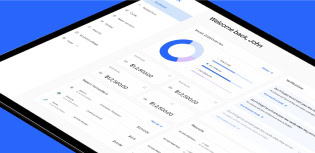How churches streamline expense reconciliation and save time

Church finance teams don’t get into ministry to chase receipts, but that’s exactly what many are forced to do. They’re digging through paper trails, emailing staff for missing GL codes and spending hours reconciling transactions line-by-line.
These scenarios aren’t just administrative headaches. They’re distractions from the purpose that drives the organization. When reconciliation is slow, so is the ability to report, budget and plan for what comes next.
And that’s not even counting the exposure to compliance risks and fraud. In 2023 alone, global church financial fraud was estimated at $62 billion. Without clear controls or real-time visibility, churches risk becoming part of that statistic.
Through automated reconciliation, churches are reclaiming their time, improving financial stewardship and protecting the integrity of their mission. This post shows how they’re doing it and how your finance team can, too.
How churches manage expense reconciliation best
Managing reconciliation efficiently starts with eliminating bottlenecks: shared cards, paper receipts and siloed data. Churches that excel at reconciliation build control and automation into the process from the ground up. They reduce friction and free up finance staff to focus on higher-value work.
The best-performing church finance teams implement a few core strategies like:
- Automating reconciliation work wherever possible, like receipt capture, GL coding and receipt matching, to reduce manual entry and errors
- Issuing individual cards to employees and volunteers, to control spending and eliminate shared-card confusion
- Integrating with church accounting software like NetSuite or Aplos to streamline reporting and audit readiness
- Segregating duties between various team members, to prevent fraud and catch errors
At Family in Christ Community Church, reconciliation once took 5 days. It’s easy to see why from Office Administrator Mary Boggs’ description:
“I would have to give ministry leads the physical paper credit card statement that I received at the end of every month. They would need to attach receipts and tag each transaction based on which budget they wanted to allocate it to and write it on the paper itself. I then had to enter all this information manually into Aplos. It took so much time!”
By leveraging the core strategies mentioned above, the church was able to cut that time by 93%. And it wasn’t just software – it was shifting to a proactive model where spend visibility, controls and compliance were embedded into every transaction.
How automation can improve church financial management
For churches juggling tight budgets, volunteer teams and decentralized spending, automation isn’t just helpful – it’s transformative. The right finance automation tools can reduce reconciliation from days to hours, tighten financial control and give leadership real-time insight into every dollar spent.
- Eliminate manual work that slows down ministry
Churches that shift to real-time expense capture cut time spent chasing receipts and resolving errors. With automation in place, staff can tag transactions as they happen.One G2 reviewer noted that by allowing team members to upload receipts and categorize transactions in real time, automation significantly reduced their team’s administrative burden.
- Enforce spending policies up front
With automation, churches embed expense policies into every card swipe. Gateway Fellowship, which oversees multiple church tree-planting projects, issues pre-loaded cards with pre-defined rules for each ministry team. If someone tries to spend outside the set parameters, the transaction is automatically declined without any back-and-forth.
- Gain real-time financial visibility
The speed of automation means that church leaders now have access to current financial data – a game-changer for First Baptist Church of Argyle. Instead of waiting until month-end to see who spent what, finance leaders now get real-time alerts and dashboards. This agility helps them stay on budget and quickly address anomalies before they become reporting issues.
- Reduce fraud and strengthen oversight
Automation empowers churches to separate duties through role-based access, so the person approving a transaction can’t also reconcile or release funds. For First Baptist Church Umatilla, this level of control has been key to building trust with their board and staying audit-ready year-round.
Automation doesn’t just streamline tasks; it strengthens stewardship. With smarter workflows and tighter controls, churches can spend less time managing expenses and more time advancing their mission.
Best practices to streamline expense reconciliation in ministries
- Capture receipts and tag transactions in the moment
Reconciliation moves faster when staff submit receipts and transaction details right after making a purchase. Instead of collecting paperwork at the end of the month, team members can upload receipts through a mobile app, email or text and tag expenses with GL codes at the same time. This reduces delays and cuts down on missing documentation, helping finance teams close the books more efficiently.
- Map GL codes and connect to accounting systems
Church finance teams can build a standardized list of GL codes and map them to common vendors or expense types. Once mapped, staff can tag transactions accurately without needing to guess or double-check. And by leveraging pre-built integrations between expense management platforms and church financial software, teams can eliminate manual re-entry and reduce the chance of errors.
- Issue individual spend cards with clear parameters
When multiple people share one card, it becomes difficult to track spending and assign accountability. By issuing individual cards to staff or volunteers, finance leaders can monitor who spends what and under which budget. They can also set spending limits by ministry team, vendor category restrictions or blackout hours. These limits create clear boundaries that guide day-to-day purchases.
- Enforce compliance with automated workflows
Instead of chasing down missing receipts or correcting policy violations after the fact, churches can set up workflows that prompt staff to follow the right steps. If someone forgets to upload a receipt, the system can send reminders or temporarily pause card access until they complete the task. Finance leaders can also create approval flows that route expenses through the appropriate reviewers, keeping everyone aligned without unnecessary delays.
Save reconciliation time with PEX
When churches streamline reconciliation, they unlock time, reduce administrative burden and strengthen financial stewardship. Our expense management application helps make that possible with automation built for teams managing decentralized, day-to-day ministry spend.
With PEX, your team can capture receipts at the point of purchase, automate GL tagging and sync expenses to your accounting system in real time. You can issue individual spend cards with custom limits and approval workflows, without adding manual work to your team’s plate.
Churches using PEX have seen measurable results. For example, Family in Christ Community Church cut reconciliation time from 5 days to just 20 minutes. First Baptist Church of Argyle saves 5 hours each month on receipt management and increases profitably through 1% back on all qualifying PEX card purchases.
Want to see what this could look like for your church? Schedule a demo with PEX to explore how you can reduce reconciliation time and gain better visibility into ministry spending.
Similar resources
Opinions, advice, services, or other information or content expressed or contributed here by customers, users, or others, are those of the respective author(s) or contributor(s) and do not necessarily state or reflect those of The Bancorp Bank, N.A. (“Bank”). Bank is not responsible for the accuracy of any content provided by author(s) or contributor(s).








